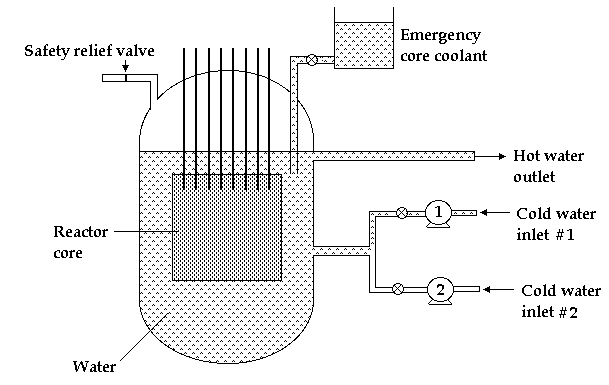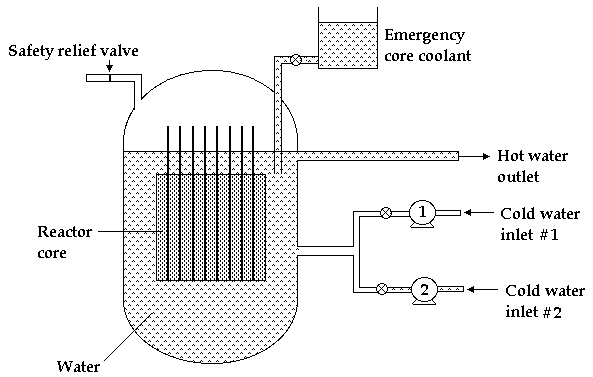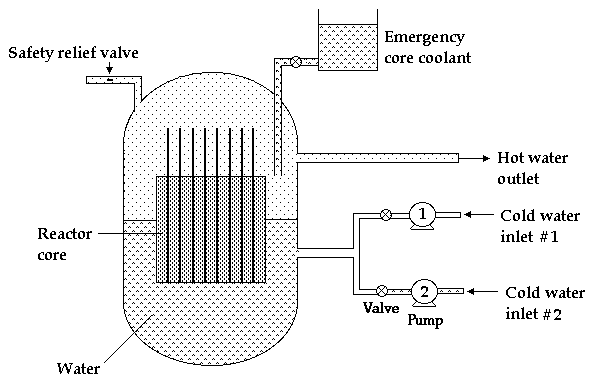
The most authoritative source of information is the Report of the President's Commission on the Accident at Three Mile Island (J. G. Kemeny, Chairman), Pergamon Press, New York, October 1979.
For an interesting novelized account see, for example, "Three Mile Island" by Mark Stephens, Random House, New York, 1980. Check out also the movie "China Syndrome" at your local video store.
Here is a very simplified but essentially accurate 'bottom line' of what happened in this pressurized water reactor on March 28, 1979.

During normal operation, at full power, the control rods are withdrawn from the reactor core, water from the principal source (#1) is circulating through the core, as well as through the secondary heat exchange loop. The secondary water source (#2) is in standby. The key to preventing a major accident is to keep the core submerged in water. In this way both the water and the core will be maintained at a safe temperature level. Water must not be allowed to boil inside the pressure vessel. If it does, there is a pressure relief valve to release the steam that would build up; during normal operation this valve is closed. Even when the reactor is shut down because of minor malfunctions, water must continue to circulate through the core until the chain reaction gradually dies out and the heat release stops.
That's precisely how the accident began, with a minor malfunction, for which routine remedial responses were available.

Water supply #1 was interrupted because of equipment malfunction. The operators immediately switched to inlet #2 by activating pump #2. However, the water did not enter into the cooling loop because the valve was accidentally left closed the previous day. (The reactor operators didn't realize this.) This loss of coolant is not a rarity in normal operation of nuclear reactors. The reactor overheated to some extent and remedial actions ensued. The first response was to 'scram' the reactor by immediately inserting the control rods all the way into the core. This worked fine. The second response was to open the pressure relief valve to let out some of the steam. This also worked, but a crucial equipment malfunction occurred here: the valve remained open; it got stuck and did not close when the pressure returned to a normal level. The third response was to activate the emergency core cooling system to compensate for the loss of water and thus maintain the core submerged. This also worked but was stopped prematurely because an operator misinterpreted the water level controller readings. This unexpected combination of undetected mechanical failures and operator mistakes resulted in partial core meltdown.

As the water continued to evaporate, its level dropped, part of the core was 'exposed' (left without coolant), overheated and melted... The cleanup is still in progress at a cost that exceeded a billion dollars.